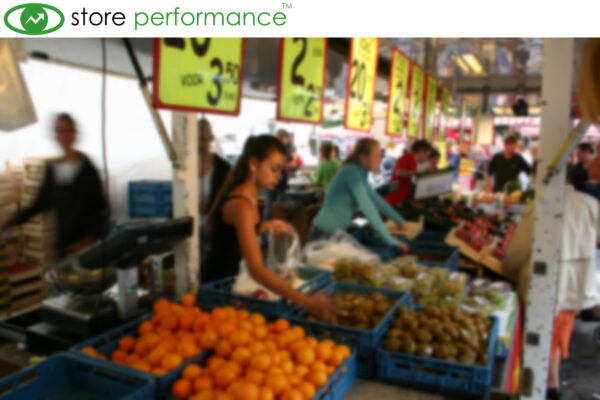Understanding customers new choices and expectations as the country opens post lockdown is a challenge. Much has changed, some of it may stick, some of it may not. Pent up demand is a step on the way to a revised customer expectation, experience and volume over the coming months.
It has never been more important to impress your customers.
- If your loyal customers have a poor experience against there new expectations, will they return?
- Will new customers enjoy your experience in comparison their lockdown experience or your competitors?
Here we explore some of the experience of the past year, some predictions going forward and the need to provide a safe, friendly measured experience to your customers.
Good communication of your cleanliness standards combined with good understanding of your customers changing needs post-lockdown will provide a solid base in the “new normal” but understanding and reacting to changing demand will provide a boost and a platform for future growth.
Experimentation
Shoppers have been experimenting with 136 million additional meals at home each week against pre-lockdown. This has brought experimentation with a third of house adding a dish to their weekly shop.
91% of shoppers said they intend to continue cooking at home with 58% siting cost saving and 58% offering potential health benefits as a reason.
Healthy Eating
More shoppers have turned to healthy eating in response to the pandemic over concerns of the virus and evidence obesity could increase the risk of death or serious illness, and 81% want to eat more healthily.
Plant based meals were up 46%, whilst vegetarian meals were up 25% with 35% consuming more fruit and 33% more vegetables. In addition, food that claim to improve energy levels, gut health and sleep will gain ground this year.
As consumers have enjoyed cooking their own food, convenience foods, such as pizzas have declined by 1.1% and chilled, prepared food by 3.6%.
Sweets have fared better but are expected to suffer post-pandemic as healthy eating is promoted by government.
Customer Experience & Safety
Even within current restrictions, customers are venturing further afield with supermarkets including Tesco, Sainsbury, Waitrose, Morrisons and Asda and being a key destination. Shoppers are prioritising convenience and safety over everything else and are looking for a confident and safe return to shopping where cleanliness of the store (91%) is as important as variety of product range, communicating this effectively will be key to success past lockdown.
People, even those who are vaccinated, are looking for a demonstrably clean environment. They are looking for less people rather than more. They want to know your busy and quiet times. They want to know how busy you are now.
Localisation
Convenience grew by £3.8bn (9.2%) as consumers stayed close to home and avoided larger stores. Shoppers spent an extra 63.3% at food and drink specialist stores such as butchers, greengrocers and bakeries in February compared to the same month last year, with almost two thirds (64%) of Brits choosing to shop closer to home over the past 12 months.
91% of shoppers say they will keep shopping locally to support local and independent businesses post pandemic. Work from home will continue to offer opportunity during the day for home fatigued customers to indulge themselves in a different environment.
Online Groceries, Deliveries, Meal Boxes and “Branded products”
2020 added more new online shoppers as the previous 5 years combined. In February 2021, online grocery is 115.2% up with the over 65s having increased their spend by 332.5%. Having overcome the barriers to entry, 57% of shoppers expect to continue to use online delivery with 39% of people plan to buy all of their groceries in-store
Subscription boxes from Hello Fresh, Mindful Chef, Gousto and other providers have increased as consumers wanted to try new food and experiment more.
During the pandemic, restaurant deliveries have grown 350% driven by over 45s redirecting spend from eating out. 75% of consumers expect to buy as much or more takeaways when restrictions are lifted.
Just Eat, Deliveroo and Uber Eats have all experienced growth and many consumers will continue to use these services in the future.
Brands including Leon, Pret a Manger, Zizzi, Startbucks and Côte Brassiere have expanded their in-store product, opening new channels for their businesses.
Moving forward
Inevitably there have been winners and losers during the pandemic and the overall food and drink market has shrunk by 12%. Many consumers have replaced the “Eat Out” experience with higher quality, branded goods.
Whilst the main supermarkets have prospered, discounters including Aldi and Lidl have had subdued growth due to lack of online presence. 39% of shoppers have spent more rather than 15% spending less on their groceries.
The increase in groceries sales will inevitably decline as the country opens up more and we return to a more normal life. Much of the growth is fuelled by over 35s with under-30s spending 40% less per person and 30% less per household.
All change
As we have discussed there have been many positive and negative changes over the past year, many of which will stay and many will fall away. The grocery stores, categories and products that have benefited most will need to use the additional momentum to move secure their position in the market.
Competition for “share of stomach” will be fierce as consumer behaviour changes again and settles in to the “new normal” where supermarkets, convenience, restaurants, fast food, casual dining and coffee outlets compete for loyal and new customers in an ever-changing environment.
It has never been more important to provide excellent customer experience based by comprehensive data and analysis that is turned into insight and actioned in-store.
Store Performance
We help busy, independent multi-site food service operators reach your potential with our unique services and platform.
How can we help you with your multi-unit business?
References:

